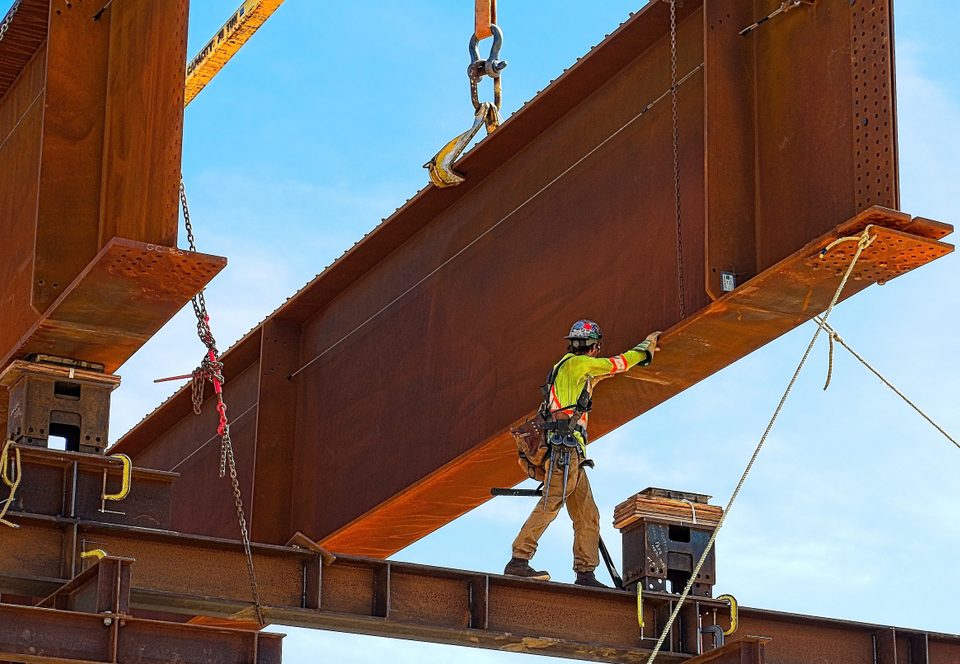Basics on Steel and Metal Forging Processes

Avoiding Steel and Metal Building Construction Errors
May 5, 2023
Key Variables in Choosing Steel Structure Size
June 2, 2023There are several processes in the steel and metal world that go back for thousands of years and are still used today, and one of the most well-known here is metal forging. Referring to the general process of shaping metals using compressive force with various forms of equipment, forging can be carried out for several different metals, including steel.
At Wasatch Steel, we’re happy to offer a wide range of steel products for clients around Salt Lake City and other parts of Utah, from steel tube to steel bar, steel sheet and more. Here are some basics on the history and modern purpose of forging, some key qualities of metals that have been forged, and the kinds of equipment often used in this process.
Metal Forging Basics and History
Metal forging is one of the oldest mechanical processes on the planet, dating back to ancient Mesopotamia in 4000 BC. Over the centuries, many cultures around the world have used forging to create weapons, tools and other objects from various metals including iron and steel. Today, this process is still widely-used in a variety of industries – despite its age!
Modern Purpose
For those who aren’t familiar with it, today’s forging process involves using compressive force to shape metal into the desired design. This is done through a combination of physical force and heat, which help the target material become malleable and easier to shape. Many types of steel forging processes are used in today’s world, with some examples being die-forging and hammer-forging – both of which involve specialized tools & machinery.
One key purpose of the forging process is to remove impurities from the target metal and make it stronger, while also providing a more aesthetically pleasing finish. It’s also used to create complex parts that would be near-impossible to replicate through other methods.
To be clear, forging isn’t the only process that helps in these areas. The casting process, for instance, comes before forging and helps to shape raw metal into a more malleable form. But it’s quite common for casting to be followed by forging, as the latter helps refine and strengthen the target material.
Qualities of Forged Metal Materials
Here are some of the common characteristics of forged steel and other metals:
- Quality in stressed or sensitive applications: Because of their combination of strength and toughness, metals that have been forged can be used in high-stress and sensitive applications.
- Uniform grain flow: The forging process is usually done at a very high temperature, which ensures that the grain of the metal flows uniformly throughout its structure. This helps make it more durable and better able to withstand wear & tear.
- Very little scrap: When compared to other manufacturing processes, forging generally produces very little scrap material – making it an efficient and cost-effective method.
- Speedy part production: Since the forging process produces uniform parts with little scrap, it can often be completed much faster than other manufacturing methods.
Equipment Used for Forging Steel
The equipment used in steel forging varies depending on the particular application and desired outcomes of the job. Some of the most common items used here include:
- Hammers: One of the oldest and most traditional methods of forging is still used today. Hammers are used to manually strike the metal and shape it into the desired form.
- Presses: Hydraulic presses, screw presses, or pneumatic hammers can also be employed in forging steel, as they provide greater control over the force applied to the target material.
- Die-casting machines: These specialized machines help create complex shaped objects with precision and accuracy, making them ideal for intricate projects.
- Upsetters: Similar to a press in many ways, the key difference with an upsetter is that it’s horizontal in nature. Instead of the metal being driven down, it’s driven into the sides of a die.
Which Metals Can Be Forged?
The answer here is simple: Almost all of them. Because all metals receive some level of impact from heat and compression, which are the key functions of forging, many different materials can be subject to the process. They also benefit from it in various ways, with some of the most common examples being steel, iron and aluminum alloys.
As we’ve seen so far, forging is one of the oldest and most reliable methods of manufacturing metals. By using compressive force and heat, it helps shape, strengthen and refine various materials – including steel. It’s also a very cost-effective process, as it produces little scrap material while providing speedy part production and uniform grain flow. With specialized tools & machinery now available on the market, such as hydraulic presses and die-casting machines, forging is more accessible than ever before.
For more here, or to learn about any of our steel products or services for clients around SLC and other parts of Utah, speak to our team at Wasatch Steel today.



